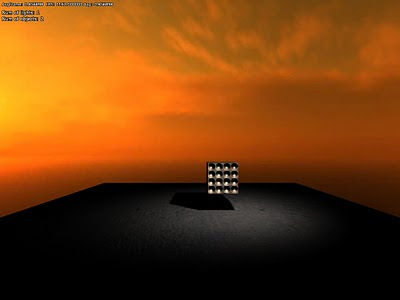Mental Models

Look around the room or the place you are currently in. It certainly feels like what you are seeing is really there, right? However, that's not really the case. Reality is in fact made up by subatomic particles that constantly exchange various force particles amongst each other [1]. What you think of as a chair is really just a collection of particles that happen to form a temporarily semi-stable configuration. The reason why you see it as a chair only has to do with how your brain chooses to process the various data that it collects through its senses.
In the previous post on presence I mentioned how the brain is made up of modules, each of them having their own specific purpose. The results from these various modules are then used to form a collective image of your surroundings. For instance, there is a particular module that recognizes faces and, if damaged, it can no longer recognize people - the person affected will only see an object made up of some hair, a nose, two eyes and so forth. Recognizing individual people will only be possible if they have a particularly stand-out feature, like a large beard. Apart from that, all faces will look alike to this person. The normal flow of information is broken and something that most of us take for granted, an intrinsic part of our reality, is no longer present.
This is an extremely important point and it's essential to fully grasp it. It's not as if people who lose the ability to see faces still really see faces but don't "recognize" them. This is the good old "homunculus in the head" fallacy. When you look at the world around you, you are not really seeing details. You are being fed a stream of information and that stream contains things like "that is a chair", "the chair is made of wood", "that is the face of your mother", and so on. If the brain module that does the processing needed for a particular piece of information is damaged, it's not like your "mental view" remains the same - information is what your mental view is made up from. To get a better idea of this, look at this image:
presence for some discussion on this.
[3] Brian Upton goes very in-depth into this area in his book.
[4] The game was not this evenly divided into groups, but the general gist was this kind of behavior.
[5] There are a lot of psychological reasons for this such as the ultimate attribution error and anchoring.FAST DOWNLOADads 
[3] Brian Upton goes very in-depth into this area in his book.
[4] The game was not this evenly divided into groups, but the general gist was this kind of behavior.
[5] There are a lot of psychological reasons for this such as the ultimate attribution error and anchoring.

Add Comment
comment url



